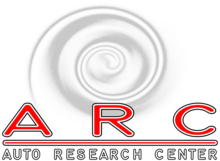
Wind tunnels are large tubes with air blowing through them which are used to replicate the interaction between air and an object flying through the air or moving along the ground. Researchers use wind tunnels to learn more about how an aircraft will fly. NASA uses wind tunnels to test scale models of aircraft and spacecraft. Some wind tunnels are large enough to contain full-size versions of vehicles. The wind tunnel moves air around an object, making it seem as if the object is flying.

The Ames Research Center (ARC), also known as NASA Ames, is a major NASA research center at Moffett Federal Airfield in California's Silicon Valley. It was founded in 1939 as the second National Advisory Committee for Aeronautics (NACA) laboratory. That agency was dissolved and its assets and personnel transferred to the newly created National Aeronautics and Space Administration (NASA) on October 1, 1958. NASA Ames is named in honor of Joseph Sweetman Ames, a physicist and one of the founding members of NACA. At last estimate NASA Ames had over US$3 billion in capital equipment, 2,300 research personnel and a US$860 million annual budget.
Lola Cars International Ltd. was a British race car engineering company in operation from 1958 to 2012. The company was founded by Eric Broadley in Bromley, England, before moving to new premises in Slough, Buckinghamshire and finally Huntingdon, Cambridgeshire, and endured for more than fifty years to become one of the oldest and largest manufacturers of racing cars in the world. Lola Cars started by building small front-engined sports cars, and branched out into Formula Junior cars before diversifying into a wider range of sporting vehicles. Lola was acquired by Martin Birrane in 1998 after the unsuccessful MasterCard Lola attempt at Formula One.
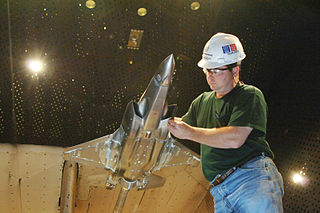
The Arnold Engineering Development Complex (AEDC), Arnold Engineering Development Center before July 2012, is an Air Force Materiel Command facility under the control of the Air Force Test Center (AFTC). Headquartered at Arnold Air Force Base, Tennessee, the Complex also operates from geographically separated units at Ames Research Center, Mountain View and Edwards AFB, California; Peterson AFB, Colorado; Eglin AFB, Florida; the Federal Research Center at White Oak, Maryland; Holloman AFB, Kirtland AFB, and White Sands Missile Range, New Mexico; Wright-Patterson AFB, Ohio, and Hill AFB, Utah. AEDC operates more than 68 test facilities, including, but not limited to, aerodynamic and propulsion wind tunnels, rocket and turbine engine test cells, environmental chambers, arc heaters, ballistic ranges, sled tracks, centrifuges, and other specialized test units.
March Engineering was a Formula One constructor and manufacturer of customer racing cars from the United Kingdom. Although only moderately successful in Grand Prix competition, March racing cars enjoyed much better success in other categories of competition, including Formula Two, Formula Three, IndyCar and IMSA GTP sportscar racing.
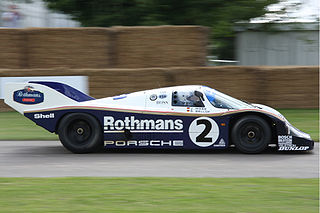
The Porsche 956 was a Group C sports-prototype racing car designed by Norbert Singer and built by Porsche in 1982 for the FIA World Sportscar Championship. It was later upgraded to the 956B in 1984. In 1983, driven by Stefan Bellof, this car established a record that would stand for 35 years, lapping the famed 20.832 km (12.93 mi) Nürburgring Nordschleife in 6:11.13 during qualifying for the 1000 km Sports Car race. The record was finally surpassed by Timo Bernhard in a derestricted Porsche 919 Evo on 29 June 2018.
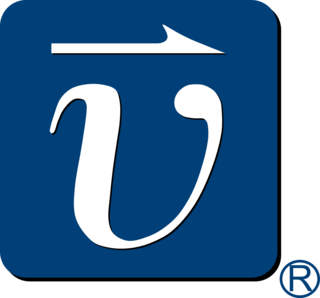
Airflow Sciences Corporation (ASC) is an engineering consulting company based in Livonia, Michigan, USA that specializes in the design and optimization of equipment and processes involving flow, heat transfer, combustion, and mass transfer. Engineering techniques include Computational Fluid Dynamics (CFD) modeling, experimental laboratory testing, and field measurements at client sites. ASC works for a wide range of industries world-wide, including power generation, manufacturing, aerospace, HVAC, food processing, biomedical, pollution control, oil & gas, rail, legal, and automotive.
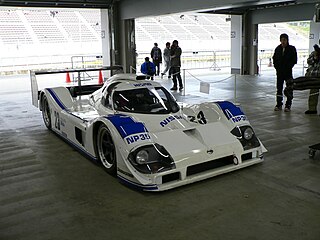
The Nissan P35 was a planned Group C car built by Nissan Motors for competition in the World Sportscar Championship. Developed by Nissan Performance Technology Inc. (NPTI), which had formerly raced under the name Electramotive in the United States, the cars were intended to be completed by the middle of 1992, with competition starting in 1993. However economic troubles for Nissan led to the cancellation of the project soon after testing of the first cars had begun, meaning that the P35s never raced.
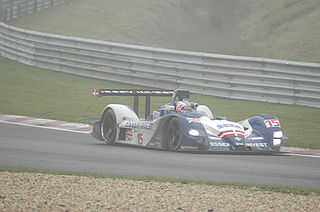
The Reynard 02S was a Le Mans Prototype race car built by Reynard Motorsport in 2002. Intended to replace the failed Reynard 2KQ prototype, the 02S would end up becoming the final new design from Reynard as the company went bankrupt prior to the project's completion.
In aeronautics, expansion and shock tunnels are aerodynamic testing facilities with a specific interest in high speeds and high temperature testing. Shock tunnels use steady flow nozzle expansion whereas expansion tunnels use unsteady expansion with higher enthalpy, or thermal energy. In both cases the gases are compressed and heated until the gases are released, expanding rapidly down the expansion chamber. The tunnels reach speeds from Mach 3 to Mach 30 to create testing conditions that simulate hypersonic to re-entry flight. These tunnels are used by military and government agencies to test hypersonic vehicles that undergo a variety of natural phenomenon that occur during hypersonic flight.

Reynard Motorsport was the world's largest racing car manufacturer in the 1980s. Initially based at Bicester and latterly at Reynard Park, Brackley, England the company built successful cars in Formula Ford 1600, Formula Ford 2000, Formula Vauxhall Lotus, Formula Three, Formula 3000 and CART.
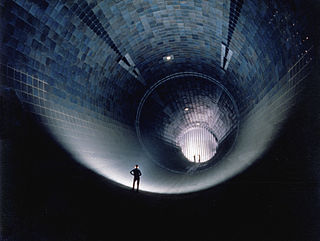
The Propulsion Wind Tunnel Facility, located at Arnold Engineering Development Complex, Arnold Air Force Base, Tennessee, holds three wind tunnels: the 16-foot transonic (16T), 16-foot supersonic (16S), and the aerodynamic 4-foot transonic (4T) tunnels. The facility is devoted to aerodynamic and propulsion integration testing of large-scale aircraft models. The tunnels are powered by a large compressor plant which allows the wind tunnels to run for extended periods of time. The test unit is owned by the United States Air Force and operated by Aerospace Testing Alliance.

Standard wind tunnel models, also known as reference models, calibration models or test check-standards are objects of relatively simple and precisely defined shapes, having known aerodynamic characteristics, that are tested in wind tunnels. Standard models are used in order to verify, by comparison of wind tunnel test results with previously published results, the complete measurement chain in a wind tunnel, including wind tunnel structure, quality of the airstream, model positioning, transducers and force balances, data acquisition system and data reduction software.
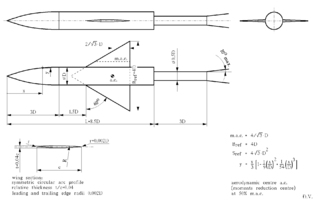
AGARD-B is a standard wind tunnel model that is used to verify, by comparison of test results with previously published data, the measurement chain in a wind tunnel. Together with its derivative AGARD-C it belongs to a family of AGARD standard wind tunnel models. Its origin dates to the year 1952, and the Second Meeting of the AGARD Wind Tunnel and Model Testing Panel in Rome, Italy, when it was decided to define two standard wind tunnel model configurations to be used for exchange of test data and comparison of test results of same models tested in different wind tunnels. The idea was to establish standards of comparison between wind tunnels and improve the validity of wind tunnel tests. Among the standard wind tunnel models, AGARD model configuration B (AGARD-B) has become by far the most popular. Initially intended for the supersonic wind tunnels, the AGARD-B configuration has since been tested in many wind tunnels at a wide range of Mach numbers, from low subsonic, through transonic to hypersonic. Therefore, a considerable database of test results is available.
The HPD ARX-04b is an LMP2 race car designed and built by Wirth Research for Honda Performance Development. The car was designed as the successor to the HPD ARX-03 series of Le Mans Prototypes, however the poor performance of the car meant that the older model outlived the ARX-04b, and the 04b only contested one race, the 2015 24 Hours of Daytona.

The R. J. Mitchell Wind Tunnel is a low-speed wind tunnel which is part of the Faculty of Engineering and the Environment at the University of Southampton. It is the largest wind tunnel in University ownership in the UK. It is named after famed British aircraft designer R.J. Mitchell.
The SCORPION(Self CORrecting Projectile for Infantry OperatioN) program was a research initiative funded by the U.S. Defense Advanced Research Projects Agency (DARPA) and led by the U.S. Army Research Laboratory (ARL) and the Georgia Institute of Technology to integrate micro adaptive flow control (MAFC) technology into small caliber munitions to develop spinning, guided projectiles. The program led to the creation of a spin-stabilized 40 mm grenade, also called SCORPION, that could propel itself to its target by using calculated micro-jet bursts of air to correct its path once launched.

The Ginetta G60-LT-P1 is a non-hybrid Le Mans Prototype built by Ginetta for use in the LMP1 category for the FIA World Endurance Championship, as well as the 24 Hours of Le Mans. The G60-LT-P1 had its competition debut at the 2018 24 Hours Of Le Mans, after financial issues led to the withdrawal of the car at the initial round of the 2018–19 FIA World Endurance Championship, the 6 Hours Of Spa Francorchamps.

The Strakka-Dome S103 is a Le Mans Prototype LMP2, built to the ACO/FIA Le Mans Prototype LMP2 Regulations. The car was originally eligible for use in the FIA World Endurance Championship, European Le Mans Series, Asian Le Mans Series as well as the IMSA sanctioned WeatherTech Sportscar Championship. Following the 2017 rule changes for the class, the car is no longer eligible for use in the FIA World Endurance Championship, the WeatherTech Sportscar Championship and the European Le Mans Series. However, it is still eligible for use in the LMP2-Am Asian Le Mans Series.
Diane Holl is a British engineer who has worked in Formula One, Championship Auto Racing Teams (CART), and NASCAR. She is employed at the Hendrick Motorsports NASCAR team as director of vehicle engineering.
